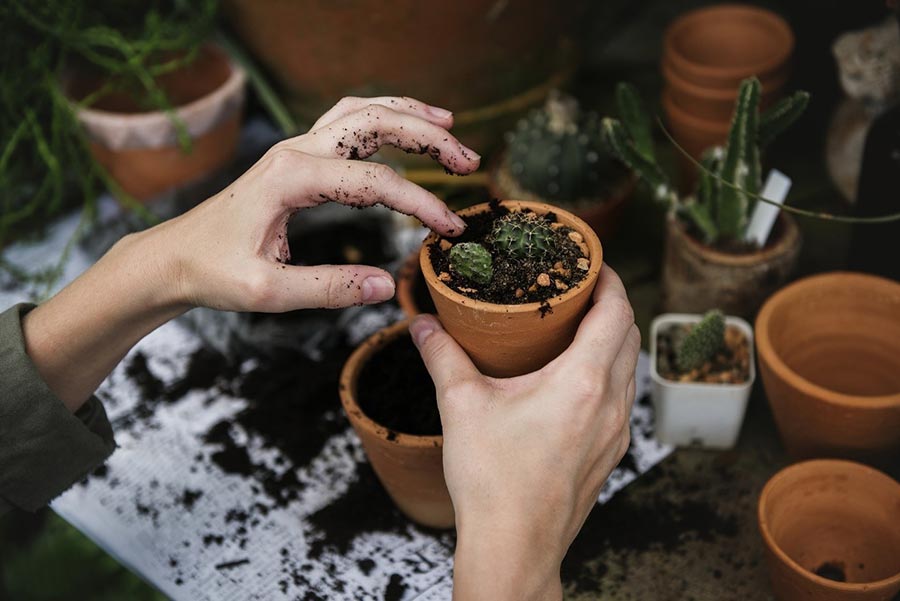By Jill Stark
April 25, 2019 — The Sydney Morning Herald
There is a park near my apartment that has become like a second home. When anxiety has me in its teeth, it is my place of quiet retreat.
I sit listening to the wind whistle through the leaves of the ancient English elms, and, for a while, the chatter in my head is placed on mute.
Therapists are prescribing getting out into nature as way to support mental health.
The great outdoors is a natural healer. There’s something innately calming about letting our bare feet feel the grounding energy of the earth.
And yet, in a hectic modern age where we’re constantly plugged into electronic devices and confined by the concrete jungles of big cities, connection to the natural world can be hard to find.
But the rejuvenating benefits of time spent in nature are difficult to ignore, and increasingly “ecotherapy” is being adopted as a preventative and restorative health strategy.
With anxiety and depression rates soaring, doctors and mental health professionals are harnessing the call of the wild to help restore emotional and physical wellbeing.
In Scotland, where I grew up, “nature prescriptions” are being offered by the National Health Service to treat chronic illnesses including depression, anxiety, diabetes and heart disease.
GPs in the remote Shetland Islands are prescribing birdwatching, hiking and beach walks for patients with debilitating conditions.
Picking up driftwood, perusing shells, making daisy chains and listening to birdsong might seem an unconventional way to beat the blues but the practice seems to work.
It’s a form of outdoor mindfulness – where patients take time to be still and silent and absorb the raw beauty of their natural surroundings – that has been shown to help calm the nervous system, lower blood pressure and boost positive feelings.
While the jury is still out on its efficacy as a standalone treatment, the popularity of “green therapy” is gaining pace, with a growing body of evidence to back up the healing properties of time spent in nature.
In Japan, Shinrin-yoku or “forest bathing” is a well-established practice since the 1980s that is now widespread in other parts of Asia and Europe.
Nature based therapy is being used as an adjunct to traditional treatment by some counsellors, psychologists and occupational therapists.
It encourages participants to immerse their senses in nature and studies have shown that within 15 minutes, stress levels and heart rate lower and blood pressure improves.
Here in Australia, nature based therapy has not yet reached the medical mainstream but it is being used as an adjunct to traditional treatment by some counsellors, psychologists and occupational therapists.
On a more recreational level, guided forest therapy walks are being offered by Melbourne’s Royal Botanic Gardens – a sign that city dwellers are keen to find an oasis of calm in the hustle and bustle of the big smoke.
Participants are invited to “slow down and move through a range of beautifully calming and healing activities in your sanctuary of nature in the city”.
Kit Kline, a counsellor based on Victoria’s Surf Coast, first started using nature as a therapy in her work in the alcohol and drug treatment sector, and now trains social workers and health practitioners in nature based mindfulness through her organisation, Nature Based Therapy.
“I once worked with a client who was suffering from substance abuse and bipolar disorder and found it difficult to express himself and engage in counselling. I took the counselling out of the clinical setting and we planted seeds and tended to a garden,” she says.
“The client was able to open up while connecting to nature. We used nature as a metaphor for the issues that he was experiencing in life.”
Kline believes shrinking backyards and the shift from face-to-face contact to online interactions has diminished our relationship to the great outdoors but with effort we can restore it.
“Connecting to the natural world allows us to slow down and take a good look at our values. It requires us to take a day or two out of our everyday routine to visit the beach, go for a forest walk, swim in a local river or just tend to our garden,” she says.
“The key is not just to spend time in nature but to really connect to it by becoming aware of our environment through our senses.”
For some, getting outdoors may be the biggest hurdle. When I was grappling with debilitating anxiety and depression, it was often a struggle just to get out of bed.
But time spent in nature invariably lifted my mood. My psychologist “prescribed” a brisk 30 to 60-minute walk in the park every day as part of my therapy, pointing to evidence that showed this routine had been found to be as effective as some antidepressants.
Kline says her clients often find being present and observing the natural world slows down the mind and helps gain clarity around difficult emotions and their complex inner landscapes.
“Our relationship to the natural world is a reflection of our relationship with ourselves. If we want to understand ourselves better, then we need to connect to nature and understand the natural world better.”
Jill Stark is a journalist and author of Happy Never After: Why The Happiness Fairytale Is Driving Us Mad (And How I Flipped The Script)

